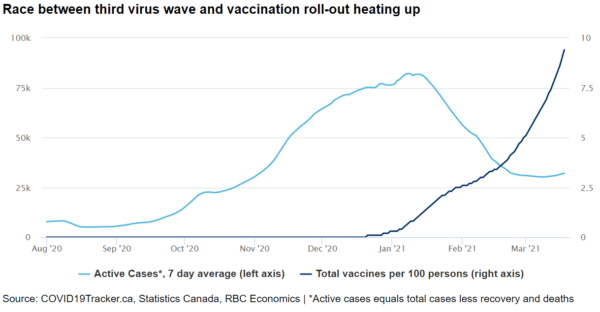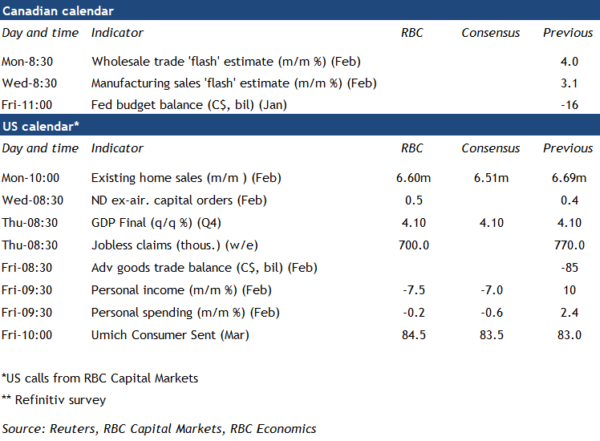It would not be at all surprising to see flash Canadian wholesale and manufacturing sale reports for February soften albeit after very solid January gains (wholesale sales rose 4.0%, manufacturing up 3.1% in January). The latter will likely continue to be weighed down by disruptions to auto production from ongoing computer chip shortages. But the economy still looks on pace to grow at a 4.5% (annualized) rate in Q1. Home building activity in February came in well above long run levels with 245K (annualized) house starts. And a 4% bounce-back in February retail sales retraced most of a 4.7% drop over December and January as restrictions on in-store shopping eased.
Growth south of the border also looks on track to pick up as virus containment measures ease. $242 billion in direct transfers to households out of the newly minted US $1.9 trillion stimulus package have already been paid out. A lot of that stimulus will go to support a recovery in services spending, which has a relatively low import content, as containment measures ease. So spillovers from that US growth into Canadian exports will be smaller than normal. Still, the dollar amounts are huge ($1.9 trillion is about 9% of annual US GDP) and some of that stimulus will also spill over into US trading partners.
The single greatest headwind to growth remains virus spread – and case counts are once again accelerating in parts of Canada, particularly Ontario. The race between the vaccination campaign and the spread of Covid-19 and its new variants will play a critical role in determining the speed at which the economy reopens. The good news on that front, is that Canadian vaccine deliveries are also accelerating with roughly 2 million doses of Pfizer and Moderna vaccines expected to arrive next week – roughly double the earlier weekly record.
Week ahead data watch:
US personal spending will likely moderate in February after a 2% jump in January. We look for faster increases in March as millions of Americans received another round of stimulus checks.















